By Hannah Means-Shannon
Marvel’s an enigmatic company. It’s an underlying paradox that goes hand in hand with their media-active public image with Stan Lee at the pop-culture helm. Sean Howe’s book on Marvel’s history, MARVEL: THE UNTOLD STORY, generated a lot of gossip and speculation long before review copies were circulating and an active Facebook and Tumblr presence treated fans to lots of amusing, shocking, and often long-forgotten images of now-legendary Marvel staffers and significant and/or wacky comics pages. This set the tone for a celebration of Marvel as much as an inside look at the mysteries of behind one of the biggest pop cultural phenomenons of the twentieth and twenty-first century. Howe’s book launched in eye-catching orange hardcover at Powerhouse Books on Tuesday night, accompanied by the author in conversation with a closer friend and fellow writer Chuck Klosterman. The Facebook events page suggested nearly 90 people were planning to attend, and the numbers didn’t disappoint.
Since comics are allowed to be “cool” now, it was every Marvel fan for himself, crowding Powerhouse’s repurposed church pews and step seating. Howe and Klosterman took their places with vista of visual culture-geared books behind them, and that seemed only appropriate since Howe’s book is taking up its place in cultural history as the currently most expansive in-depth look at life working for Marvel Comics.
Klosterman, an “outsider” to comics took up a position of trenchant inquisition about the whys behind Marvel comics fandom. His expressed ignorance of comics helped bridge the gap between the audience members who might have read Marvel comics since kindergarten and those who were more familiar with the colorful eruption of film incarnations breaking box offices. Howe fielded questions as basic as why he values Marvel, say, over DC, and whether he thinks the superhero films do justice to their long comic book histories, but also revealed a great deal about his own mental processes when it comes to chronicling the human stories behind his most beloved comics. His often self-effacing attitude in the presence of the weighty Marvel mythos was appealing, and fans applauded when he assured them that his four-year saga working on the book, or the less glamorous information he uncovered about Marvel has still not “turned him off of comics”.
Howe was originally attracted to a universe where characters “bumped into each other” and formed an interlocking system. The complexity drew him in and formed a “tapestry” for him as he learned more about the artists and writers beyond the comics. Like many readers, he was particularly transfixed by the Bullpen Bulletins and the literary “voice” of Stan Lee connecting with fans. Howe made no bones about it; Marvel comics, he said is the “most complicated fictional narrative in the history of the world”. It’s history forms a “snowball” with increasing size and momentum and the company’s internal workings illustrate by extension the basic principles of “how pop culture works”. The “grand story” inside the comics appealed to him, the one wherein artists and writers contributed to the glory of the Marvel Universe, but essentially had no control over its future other than their contributions. The history of Marvel is essentially one of “crass commercialism” married to an often surprising depth of metaphor and meaning.
Klosterman turned the subject toward Stan Lee as perhaps the “main character” of Howe’s book and Howe took an unusual approach to Lee’s career, commenting that though he is highly regarded as the “face of Marvel”, his work in Marvel’s early days as a writer, editor, and even “talent scout” is often “undervalued”. Questions from the audience turned back toward Lee and his level of involvement or cooperation with Howe’s research. Howe interviewed Lee by phone, he said, but wasn’t able to arrange a follow-up interview as he had hoped. Marvel, on the whole, Howe explained, has been neither hostile nor enthusiastic about his project. He chose the phrase “casually cooperative” to describe Marvel’s attitude. The greatest direct contributions to his research came from former employees, while “a couple” of current staffers lent a hand, including Tom Brevoort, in particular. The audience wanted to pick Howe’s brain about drama at Marvel concerning Jack Kirby or Steve Ditko, prompting a few former Marvel staffers present in the audience to chime in with their anecdotes, including former editor at Marvel and current editor of Papercutz, Jim Salicrup.
The Q and A was wide ranging and took in Marvel superhero films, Disney’s role in the films’ success, and a few favorite characters like Spider-Man, who Howe described as the Marvel character to “change the most over time”. If Howe was treated like a walking encyclopedia by the True Believers present, it was because his replies opened even more alluring avenues for discussion. The interaction clarified Howe’s position, and that of the comics fans attending: while True Believers may still treat the complexity of the expanding Marvel Universe like something sacred, it doesn’t prevent them from wanting to at least sneak a peek at its internal mysteries . Howe, it was clear, has seen more than most and still kept the faith. For the rest of their answers, the audience would have to consult his extensively annotated text. They marched into long lines for Howe to autograph their copies and flooded Powerhouse books with lively conversation until closing time. There was a definite sense that everyone was going to race home and immediately dive into THE UNTOLD STORY for themselves.
Hannah Means-Shannon writes and blogs about comics for TRIP CITY and Sequart.org and is currently working on books about Neil Gaiman and Alan Moore for Sequart. She is @hannahmenzies on Twitter and hannahmenziesblog on WordPress.



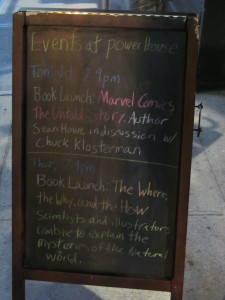

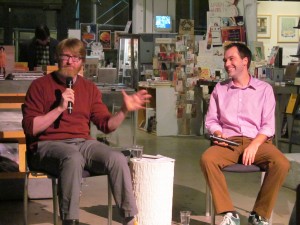
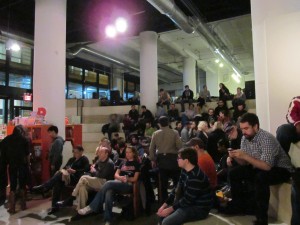

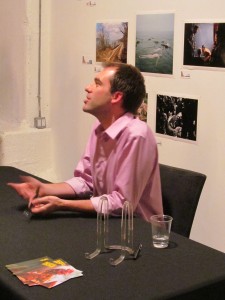
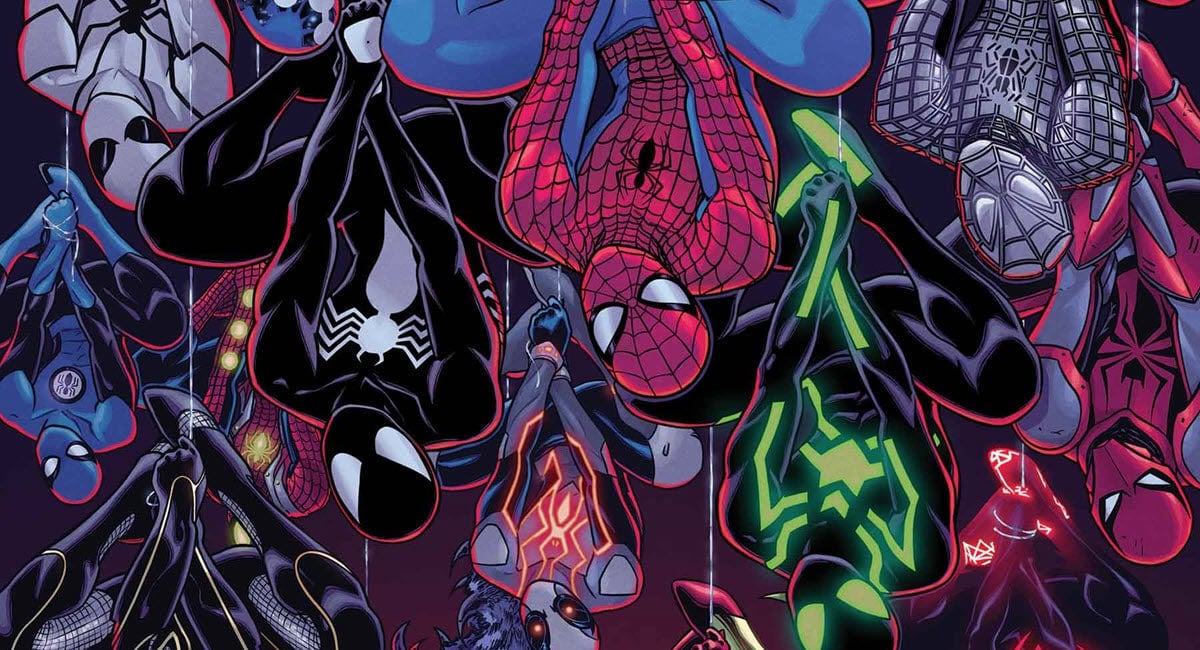





I just asked for this book for Christmas. I’ve read a few excerpts, and it seems like it’s an awesome book!
I just bought it Thursday for my Kindle and I’m already more than a hundred pages in. So far Howe’s done a great job of recreating Timely Comics during the 40’s and the 50’s and he’s managed to surprise me with some nuggets that I wasn’t aware of. Looking forward to getting to the heart of the 60’s and 70’s where the real story gets going.
Glad you all like the book! It’s quite a labor of love for Sean. If you like the book, check out the book’s page on facebook, which has a wealth of strange and interesting related trivia and images that Sean has dug up.
Comments are closed.